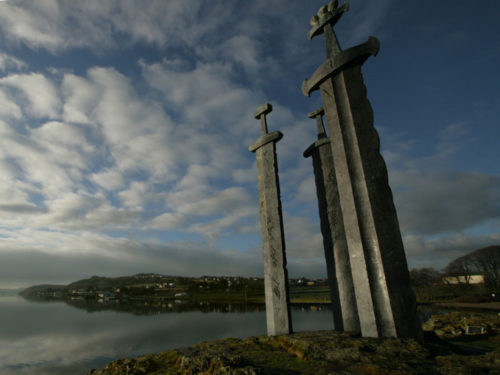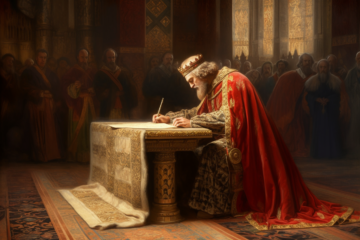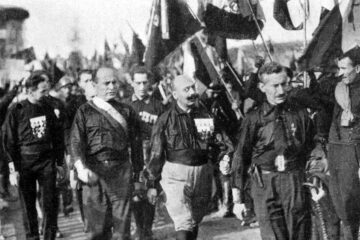Named Swords and Other Weapons in Aryan Myth, Fiction and History
by James Harting
THE ARYAN RACE IS, in its essence, preeminently a warrior race (just as the Semites are essentially a mercantile race). The handling of weapons has always been a joyous practice among White men.
Among the ancient Germanic peoples, a young man’s entrance into the life of his tribe was marked by the ceremony of “First Weapons,” in which the young boy’s paternal uncle presented him with wooden training implements for the first time.
One manifestation of the close bond between a warrior and his weapon was the custom of naming it, as though it were an actual comrade of his. Some of the names of these weapons have survived to this day. The practice of naming weapons, especially swords, is reflected in Aryan myth, legend, and modern fiction.
Here are some named swords, some of which are historical, and the others fictional:
- Joyeuse – The sword of Charlemagne
- Durendal – Roland’s sword (Song of Roland)
- Leg-Biter – Sword of the Viking king Magnus Barelegs
- Skofnung – Sword of Hrolf Kraki (in Hrolfs saga kraka)
- Naegling – Sword of Beowulf (“Nailer,” that is, “Impaler”)
- Hrunting – Unferth’s sword in Beowulf (“Thrusting”)
- Gram – Sigurd’s sword in the Volsunga saga (“Wrath”)
- Balmung – Siegfried’s sword (Nibellinglied)
- Nothung – Siegfried’s sword in Wagner’s Ring cycle (“Needful”)
- Excalibur – Sword of King Arthur (original meaning obscure; perhaps “Steel Cutter” or “Stone Cutter”)
- Whitefire – Sword of Eric Brghteyes (in the Viking novel of H. Rider Haggard)
- The Singing Sword – Owned by Prince Valiant (in the fiction of Hal Foster)
- Tizona – Sword of El Cid (Rodrigo Diaz de Vivar) (“Firebrand”)
- La Colada – Another sword of El Cid
JRR Tolkien is famous for continuing the custom of naming weapons:
- Narsil – Sword of Elendil (Meaning “Red and White Flame”)
- Anduril – Sword of Aragorn (“Flame of the West”)
- Glamdring – Sword of Gandalf (“Foe Hammer”)
- Orcrist – Sword of Thorin Oakenshield (“Orc Cleaver”)
- Sting – Dagger used as a sword by first Bilbo and later Frodo Baggins
- Grond – Morgoth’s mace (“Hammer of the Underworld”). The same name was later given to Sauron’s battering ram in the siege of Minas Tirith.
- Anglachel – Sword of Beleg, later given to Turin and renamed Gurthang (“Iron Death”)
Not only swords were given names:
- Mjoellnir – Thor’s hammer (“”Crusher”)
- Gungnir – Odin’s spear (“Swaying One”)
- Gáe Bolga – Spear or javelin belong to Cu Chulainn in Irish mythology (“spear of mortal pain/death spear”, “gapped/notched spear”, or “belly spear”)
- War Wolf – The great trebuchet of Edward I
- Raven – War banner of Ragnar Lodbrok
- Land Waster – War banner of Harald Hardrada
The practice of naming weapons continued on in to the modern era. American frontiersman Davy Crockett owned three rifles, all named for his beloved sister:
- Old Betsy
- Pretty Betsy
- Fancy Betsy
During the Second World War, the Germans produced a series of gigantic siege mortars, which could fire a projectile weighing 5,000 pounds some two miles. Although each of the six mortars had an official numerical designation, all soon acquired their own unofficial names among the troops:
- Baldur
- Loki
- Odin
- Thor
- Wotan
- Ziu
It may be that naming weapons is in some way hardwired into our racial personality!
* * *
Source: James Harting







And there’s the gigantic ‘Big Bertha’ cannon. The Excalibur story is not about pulling a sword out of a rock, it’s about having the technological capacity to cast a sword/s in a stone mold that made Arthur a king.